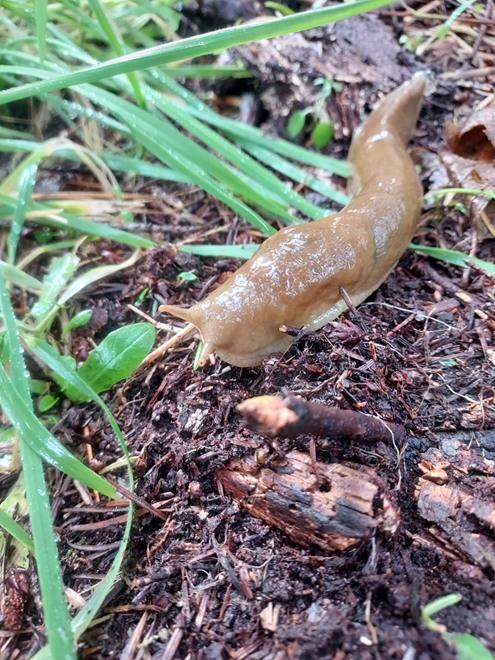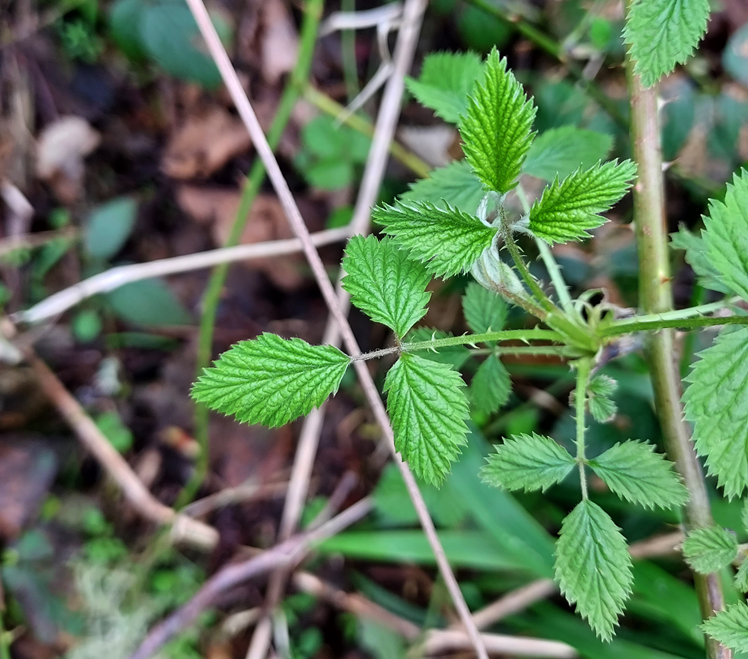Hello everyone and welcome to the first little update from Cosmic Acres.
Land Thoughts
A few days ago, my partner Charles and I went out to the land for the afternoon. I’ve never been here in the spring so wasn’t sure what kinds of plants grow. I knew about the little nettle patch, the literal acres of evergreen huckleberry, and some of the different invasive weeds, but everything looks different in every season.
We saw a Pacific banana slug (not always banana-spotted) – our native slug friend! They can be differentiated from the non-native/invasive black slug (not always black), because the black slug has a ridged pattern along the rear of its body. You can see here that the banana slug looks pretty smooth.

I went to the nettle patch to pick some nettles, but after grabbing a few leaves I really took stock of what was around me – not that many nettle plants, some looking rather chewed on. I’ve been reading Braiding Sweetgrass by Robin Wall Kimmerer. The repeated line through most of the stories in this book is about the Honorable Harvest, an ethos of foraging based in indigenous wisdom. Part of the Honorable Harvest is harvesting so that our plant relatives can grow, spread, and thrive. If I took as many nettles as I wanted, I might harm the health of this nettle patch, an area that I value and want to protect. So I stopped. Maybe next year!
Instead, I took a few minutes to clear non-native species from around the nettles, including some Himalayan blackberry shoots. Much more work is needed in this area. But because I stopped, observed what was happening, and changed course, I also noticed something interesting about some of the brambles.
The leaves had a different configuration. In Himalayan blackberry, the three leaflets start growing very close together, eventually growing into five leaflets. On these different brambles, the first leaflet is on a stem that extends it away from the other two. It wasn’t just a quirk of one leaf; it happened on the whole vine. Then I noticed the color of some of the vines – a whitish green. And then I noticed that the thorns on these vines are whiter and pointier than Himalayan blackberry. The likelier identification? Whitebark raspberry, also called blackcap raspberry – a native bramble that grows black raspberries. I am so excited to come back in a few months to look for raspberries!

Predictably, I had chosen the day because it looked like there wasn’t going to be rain, but we started getting dumped on by 4 PM. Without proper rain gear, we headed out a bit earlier than expected.
I’m looking forward to more spring days in the woods, learning about these ecosystems and enjoying some peace.